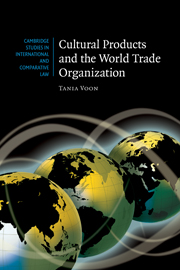Book contents
- Frontmatter
- Contents
- Detailed chapter outline
- Table of GATT/WTO agreements
- Table of GATT/WTO cases
- Table of abbreviations
- Foreword
- Acknowledgements
- Part I Stalemate and its ideological origins
- Part II Options for the future
- 4 Resolution through dispute settlement and international law
- 5 Constructing a new agreement outside the WTO
- 6 Improving the existing WTO agreements
- 7 Conclusion
- Bibliography
- Index
5 - Constructing a new agreement outside the WTO
Published online by Cambridge University Press: 23 February 2010
- Frontmatter
- Contents
- Detailed chapter outline
- Table of GATT/WTO agreements
- Table of GATT/WTO cases
- Table of abbreviations
- Foreword
- Acknowledgements
- Part I Stalemate and its ideological origins
- Part II Options for the future
- 4 Resolution through dispute settlement and international law
- 5 Constructing a new agreement outside the WTO
- 6 Improving the existing WTO agreements
- 7 Conclusion
- Bibliography
- Index
Summary
The ideal solution … – the only one likely in the long term to provide a response to the current conflict on the attention given to cultural products in international trade agreements – would be a particular convention bearing on international trade in the cultural sector, namely, a convention that would set out clearly the justification for and limitations of a particular status for cultural products by emphasizing the need to preserve cultural diversity.
Introduction
The previous chapter concluded that although WTO dispute settlement might clarify some of the exceptions under GATT 1994 and GATS as applied to cultural products, it alone cannot address the other problems with the current treatment of cultural products identified in Part I of this book and thereby provide a satisfactory, long-term solution to this issue. A second possibility would be to construct a new agreement specifically addressing the relationship between cultural policy measures and WTO obligations. The potential advantages of this approach, in comparison with resolution through dispute settlement, include increased predictability on a wide range of related issues, and an outcome that enjoys greater acceptance and democratic legitimacy among Members. However, the possibility of WTO Members reaching such an agreement within the WTO is fairly remote. The difficulty of negotiating these issues explains why the Uruguay Round failed to resolve them in the first place.
From a ‘pro-culture’ perspective, the best possibility for improving the current WTO rules in relation to cultural products may be to reach an agreement on trade and culture outside the WTO.
- Type
- Chapter
- Information
- Cultural Products and the World Trade Organization , pp. 173 - 216Publisher: Cambridge University PressPrint publication year: 2007



